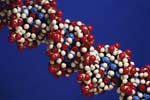 | ||
 |  | |
 | ||

| The
french version of the page proposes a different selection of texts. To read them, go to : >>> Histoire de l'hérédité et de la génétique (in French) |
|||||||||||||||||||||||||||||||||||||||||||||||||||||||||||||||||||||||||||||||||||||||||||||||||||||||||||
| During the Ancien Régime,
the notion of heredity pertained essentially to the fields of law and medicine.
Jurists used the term "heredity": heredity of goods, heredity
of offices. Doctors used only the adjective, in the expression "hereditary
diseases", as shown by the article "hérédité"
in the Diderot &
D'Alembert "Encyclopedie". Scientists and philosophers such as , Maupertuis, Buffon, Kant, started to consider the heredity as a serious and very general biological phenomenon, the laws of which had to be discovered. At this time, it was from the point of view of man that heredity was considered. |
|
||||||||||||||||||||||||||||||||||||||||||||||||||||||||||||||||||||||||||||||||||||||||||||||||||||||||||
| During the nineteenth
century, empirical and sometimes experimental researches about heredity,
pertained essentially to the following domains: physical anthropology (Prichard)
; improvement of vegetables and especially hybridisation (Sageret,
Naudin, Vilmorin
& Mendel); cytology (Weismann,
De Vries)
biometry and anthropometry (Galton). Many general
studies about heredity were published in the second half of the nineteenth
century. Galton's book on "Natural Heredity" had a major impact
on those who later created the field of genetics. During the years 1800-1850, the word "heredity" assumed its modern sense to indicate one of the most fundamental feature of biology. The expression "natural heredity" by opposition to "institutional heredity" (Lucas) was also current for a few decades. During the second half of the nineteenth century, the term "heredity" prevailed. Darwin mentioned the "marvellous principle of heredity" and made it a key concept in his theory of selection. |
|||||||||||||||||||||||||||||||||||||||||||||||||||||||||||||||||||||||||||||||||||||||||||||||||||||||||||
| In 1900, three botanists,
De Vries,
Correns et Tschermak,
"rediscovered" Mendel's laws of hybridisation. Within less than
a decade, a new science was founded on this basis, called "genetics"
by Bateson. Bateson
in England and Cuénot in France transposed
this science from plants to animals. The early genetics, which only deserved to be qualified as "mendelian", consisted in postulating the existence of hypothetical units called "genes", derived from a formal analysis of the results of the crossbreed of two individuals with a given genotype. In Great Britain, mendelism was linked to the knowledge about chromosomes due to Sutton and Janssens. In 1902, Bateson had just introduced the notions of allele, homozygote, and heterozygote. Johannsen created the terms and the operating concepts of "pure lineage", "genotype" and "phenotype". The new science soon revealed its fecundity in dealing with the problem of the transmission of certain blood types (Landsteiner). Garrod and Cuénot proposed physiological and biochemical interpretations of the mode of action of genes. Cuénot and Mercier realised also the first experimental studies about the genetic origin of the susceptibility to cancer. |
|||||||||||||||||||||||||||||||||||||||||||||||||||||||||||||||||||||||||||||||||||||||||||||||||||||||||||
| In the middle of the 1910s,
mendelian genetics was rebuilt on the basis of the chromosomic theory of
heredity which provided a primary material basis and accounted for all sort
of until then mysterious phenomena, under the sole hypothesis of Mendel's
law. Studies on Drosophilia, realized by the team led by the American biologist
Morgan, played a major role in this context. On this basis, genetics developed along three main theoretical directions : · · Genetics of the chromosomes, with a special focus on the problem of mutations. (Muller) · · Genetics of populations, which in the middle of the 1930s will become the epicentre of the theory of evolution, and especially of the theory of natural selection. (Chetverikov, Fisher, Haldane) · · Physiological genetics, or studies concerning to the mode of action of genes. (Beadle & Ephrussi ; Beadle & Tatum) This diversification of the major biological problems relevant to genetics explains why this science, marginal at first, became the theoretical basis for the whole of biology. |
|||||||||||||||||||||||||||||||||||||||||||||||||||||||||||||||||||||||||||||||||||||||||||||||||||||||||||
| Nevertheless, until the
middle of the 20th century, despite the fact that they had been rightly
located in the chromosomes, genes remained theoretical entities. Their physical
characteristics, their material nature (molecules ? groups of molecules
? sub-cells organites ? cycles of physiologic states ?), as well as their
mode of action remained a mystery. The discovery of DNA as the molecular support for hereditary characters (Avery, Mc Leod and Mc Carthy, Watson and Crick) favoured the new foundation of genetics as a science of material objects, susceptible to explain the physical bases of hereditary characters and the mode of action of genes. The middle of the twentieth century was the Golden age of molecular biology. It culminated, at the beginning of the 1960s, with the discovery, by Jacob and Monod, of the complex of structures and processes that can explain the regulation of the production of proteins for bacteria and viruses : RNA messenger, transcription of DNA into mRNA, translation of mRNA into polypeptid sequences, the "repressive" protein , "operon", allostery. The discovery of the genetic code by Nirenberg and Matthei, was strictly contemporary of studies about regulation. |
|||||||||||||||||||||||||||||||||||||||||||||||||||||||||||||||||||||||||||||||||||||||||||||||||||||||||||
| During the 1970s, biology
and molecular genetics entered a new phase. Genetic engineering, based on
the discoveries and techniques allowing to cut and insert sequences of DNA
at will, made it possible to establish a new molecular genetics (Jackson,
Symons, Berg ).
This genetics was more nuanced, more conscious of the complexity of its
object and at the same time much more powerful in its capacity to intervene
directly on the genes. Without doubt, the most fundamental discovery of the end of the 20th century has been Gilbert's on the "splitted" structure of the genes of eucaryotes, that is, the fact that they contain an alternation of expressed sequences (exons) and non-expressed sequences (introns). An unexpected complexity of structure and functioning has been thus explored. |
|||||||||||||||||||||||||||||||||||||||||||||||||||||||||||||||||||||||||||||||||||||||||||||||||||||||||||
| The decrypting of the human
genome (2000), is a technical challenge in relation to the theoretical
progresses of the second phase of genetics. Several hundreds genomes have
been already decrypted, or are currently decrypted in micro-organisms, plants,
and animals. Properly speaking, molecular genetics, and more generally molecular biology, is no more the science of heredity. To be more precise, genetics is not only about heredity : it has become the new universal language of biology, which rejoins that of cellular theory, biochemistry, and the theory of evolution. Molecular genetics does not replace those fields of investigation, but enriches them with a new grid of description for biological phenomena. |
|||||||||||||||||||||||||||||||||||||||||||||||||||||||||||||||||||||||||||||||||||||||||||||||||||||||||||
Jean Gayon, Professor at Université Paris 1- Panthéon Sorbonne. |
|||||||||||||||||||||||||||||||||||||||||||||||||||||||||||||||||||||||||||||||||||||||||||||||||||||||||||
votre billet en ligne/ l'homme
transformé / l'homme
et les gènes / le cerveau
intime
animations / événements / rencontres / cité de la santé / médiathèques / cinémas / Les défis chez vous
actualités / Nouvelle Biologie / Bionet Européen / Histoire des sciences / Point doc / A vous de jouer
Infos pratiques / Education / Handicapés / Dossier de presse / Partenaires
Aide / Plan / Nous écrire / Rechercher / Crédit /
(c) cité des sciences 2002
animations / événements / rencontres / cité de la santé / médiathèques / cinémas / Les défis chez vous
actualités / Nouvelle Biologie / Bionet Européen / Histoire des sciences / Point doc / A vous de jouer
Infos pratiques / Education / Handicapés / Dossier de presse / Partenaires
Aide / Plan / Nous écrire / Rechercher / Crédit /
(c) cité des sciences 2002
